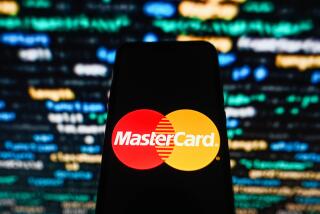AT&T jacks up ‘measured’ phone service rate because it can
With bills for pretty much everything steadily rising, some people try to keep a lid on monthly costs by opting for “measured” phone service.
What that means is they’re charged a fixed rate for a limited number of local calls, plus a per-minute rate for any additional calls. If you don’t use your phone a lot, it can be a really good deal.
Too good, apparently. Or so the bean counters at AT&T seem to have concluded.
Beginning March 1, the company’s base rate for measured phone service will jump $3 a month to $15.37 from $12.37 — a nearly 25% increase. The charge for additional local calls will be 3 cents per minute.
Separately, AT&T’s flat-rate charge for unlimited local calls will increase $1.05, to $21 a month.
These are simple plans for people with simple calling needs. Their cost to AT&T is negligible.
“It’s extortion, pure and simple,” said Regina Costa, telecom research director for the Utility Reform Network, or TURN, a San Francisco advocacy group. “There’s no proof that these price increases are justified.”
And thanks to our hands-off state regulators, no such proof is required. As of last year, the California Public Utilities Commission has allowed phone companies to jack up basic rates as much as they please.
The idea is that a competitive marketplace will keep costs down. Yet even though Verizon says it has no plans to raise its own fees for measured and flat-rate phone service, that hasn’t stopped AT&T from taking the plunge.
Lane Kasselman, an AT&T spokesman, said about 10% of the company’s phone customers have measured-rate plans. The rest have flat-rate plans.
Kasselman said fees for measured and flat-rate calling plans are going up because, well, because.
“Goods and services go up,” he told me. “That’s how our economy works.”
Glib as that may be, Kasselman does have a point. It obviously costs AT&T something to maintain and improve its network capabilities. Modest rate hikes more or less in line with the rate of inflation are understandable.
As of November, the annual inflation rate was about 3.4%.
A 25% increase, therefore, might strike some as blatant price gouging, especially for a service that’s intended mainly for penny pinchers and those on a fixed budget.
Kasselman responded that measured and flat-rate phone service are considered “a la carte” by AT&T — that is, they’re stand-alone services and aren’t priced the same way the company prices those big bundles of phone, television and Internet service.
“Customers can save a lot of money by going for packaged services,” he said.
That’s true, if you look at the cost of specific services. For example, you can get phone service plus Internet access for $39.95 a month. You can get phone, Internet and TV service for $89 a month. These prices are cheaper than if you ordered each service separately.
But those are introductory rates. After a year, your bills will climb.
That’s why Judy Berg, 63, of Fullerton says she prefers to stick with her AT&T measured-rate plan.
“I’m not interested in playing games with the company,” she said. “I don’t want to have to keep calling them to get a better rate.”
Be that as it may, TURN’s Costa said AT&T seems determined to push customers into pricier packages.
She said that because more people have flat-rate plans than measured-rate plans, the big increase in measured rates was probably intended to discourage people from switching to measured-rate service after the cost of flat-rate service rises a buck a month.
And once flat-rate service hits $21, Costa said, AT&T will have an easier time pitching customers with “money-saving” packages that increase both their service commitment and overall monthly charges.
Maybe it’s time for state regulators to get back in the saddle. The whole market-competition argument doesn’t seem to be panning out.
Money transfers
Speaking of rate hikes, Wells Fargo customers are being notified about changes to the bank’s online services.
Among other things, they’re being told that a fee may be tacked onto person-to-person money transfers made online or via a mobile device — such as for a parent who transfers a little cash to junior’s account while he’s at college. Such transactions are now free.
At the same time, Wells’ customers are being informed that “certain person-to-person transfers between Wells Fargo customers that now occur in real time may instead post to the recipient’s account the next business day.”
A cynical person (not me, of course) might characterize this as Wells, which reported record third-quarter profit of $4.1 billion, preparing to charge more money for less service.
That same cynic might also observe that by delaying delivery of a digital, fully automated electronic fund transfer that used to be instantaneous, Wells stands to profit by having control of the money for that interval (what’s known in banking circles as the “float”).
Jennifer Langan, a Wells spokeswoman, said the bank is experimenting with a new way of doing transfers. The process no longer involves people’s account numbers. Instead, you’re able to transfer money using someone’s cellphone number or email address.
A one-day delay is being applied to such transfers, Langan said, to ensure that the transactions “can be made conveniently and safely.”
She declined to say when Wells might start charging for the service or how much the fee might be.
David Lazarus’ column runs Tuesdays and Fridays. He also can be seen daily on KTLA-TV Channel 5. Send your tips or feedback to david.lazarus@latimes.com.
More to Read
Inside the business of entertainment
The Wide Shot brings you news, analysis and insights on everything from streaming wars to production — and what it all means for the future.
You may occasionally receive promotional content from the Los Angeles Times.











